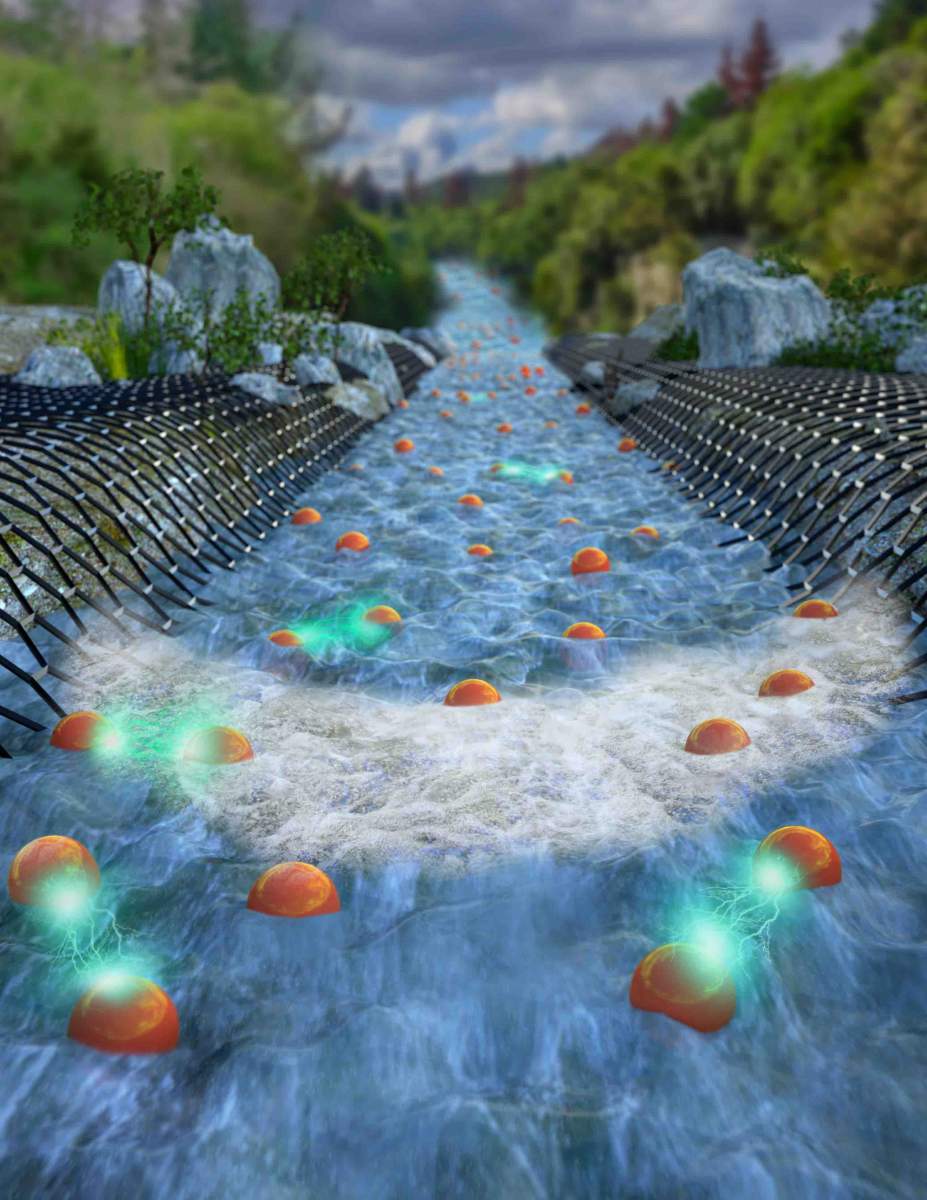
We often speak of electrons "flowing" through materials, but in fact, they do not normally move like a fluid. Such "hydrodynamic" electron flow had been predicted, though, and Weizmann Institute of Science researchers recently managed, with the help of specially-produced, nanoscopic "pipes," to image electrons flowing like the water in household pipes leading to a shower or kitchen sink. This is the first time such "liquid electron flow" has been visualized, and it has vital implications for future electronic devices.
Electron movement though materials - mainly conductors like metals - usually looks more like that of a gas than a fluid. That is, they do not collide with one another, but rather, they tend to bounce off impurities and imperfections in the material. A fluid flow, in contrast, takes it shape - be it waves or whirlpools - from frequent collisions between the particles in the fluid.
To make electrons flow like a fluid, one needs a different kind of conductor, and the team turned to graphene, which is a one-atom-thick sheet of carbon, and which can be made exceptionally clean. "Theories suggest that liquid electrons can perform cool feats that their counterparts cannot. But to get a clear-cut proof that electrons can, indeed, form a liquid state, we wanted to directly visualize their flow," said Prof. Shahal Ilani head of the team in the Institute's Condensed Matter Physics Department.
Even using graphene as a conductor, the team needed to develop a technique that would be both powerful enough to peer inside a material, yet gentle enough to avoid disrupting the electron flow. The Weizmann team created such a technique, as they recently reported in Nature Nanotechnology. This consists of a nanoscale detector built from a carbon-nanotube transistor, and the team found that can image the properties of flowing electrons with unprecedented sensitivity. "Our technique is at least 1000 times more sensitive than alternate methods; this enables us to image phenomena that previously could only be studied indirectly," say Staff Scientist, Dr. Joseph Sulpizio, in Ilani's lab.
Our technique is at least 1000 times more sensitive than alternate methods
In a new study published in Nature, the Weizmann researchers applied their novel imaging technique to state-of-the-art graphene devices produced in the group of Prof. Andre Geim at the University of Manchester. These devices were microscopic "pipes" - tiny channels designed to guide the flowing electrons. The team observed the hallmark signature of hydrodynamic flow: Just like water in a pipe, the electrons in the graphene flowed faster in the center of the channel and slowed down at the walls.
This demonstration - that given the right conditions, electrons can mimic the patterns of a conventional fluid - may prove beneficial for creating new types of electronic devices, including low-power ones in which hydrodynamic flow lowers the electrical resistance. "Computing centers and consumer electronics are devouring an ever increasing amount of energy, and it's imperative to find ways to make electrons flow with less resistance," said Dr. Lior Ella, also of Ilani's group.
The experimental team at Weizmann also included Asaf Rozen and Debarghya Dutta. The graphene devices were produced by John Birkbeck, David Perello, and Dr. Moshe Ben-Shalom from the group of Prof. Andre Geim at the University of Manchester. Theoretical calculations and computer simulations to support the experiments were performed by Dr. Thomas Scaffidi, Dr. Tobias Holder, Dr. Raquel Queiroz, Dr. Alessandro Principi and Prof. Ady Stern.
Prof. Shahal Ilani's research is supported by the Sagol Weizmann-MIT Bridge Program; the André Deloro Prize for Scientific Research; the Leona M. and Harry B. Helmsley Charitable Trust; and the European Research Council.






